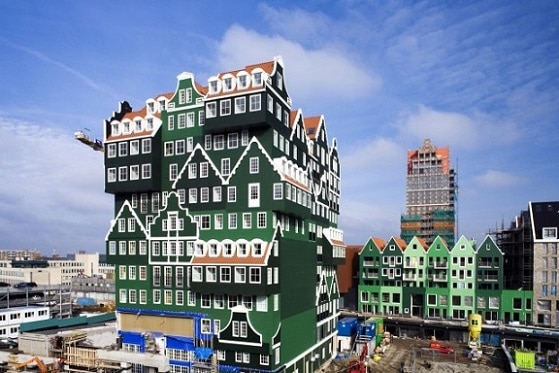The first significant period of the dutch architecture it was during the Dutch Golden Age from the early 17th century. Due to the prosperous cities economy expanded enormously.
New town halls and warehouses were built. Merchants who had made a fortune ordered the new houses built along one of the many new canals that were dug in and around various cities and towns (for defense and transportation purposes) and houses with ornate facades that benefited the its new condition.
New country houses were built in the countryside, although not in the same numbers. Some well-known architects of the time were Jacob van Campen (1595-1657), Lieven de Keys (c. 1560-1627), and Hendrik de Keyser (1565-1621).
At the end of the 19th century there was a notable neo-Gothic or neo-Gothic current, both in the church and in public architecture, in particular by the Catholic Pierre Cuypers, who was inspired by the French Viollet -le- Duc. The Rijksmuseum in Amsterdam (1876-1885) and Amsterdam Central Station (1881-1889) belong to its main buildings.
During the 20th century Dutch architects played a prominent role in the development of modern architecture. From the early 20th century rationalist architecture of Berlage, architect of the Beurs van Berlage, three groups developed during the 1920s, each with their own point of view in which direction modern architecture should take.
Among the Expressionist architects stand out M. De Klerk and PJ Kramer in Amsterdam (See Amsterdam School) and among the functionalists Mart Stam, LC van der Vlugt, Willem Marinus Dudok and Johannes Duiker who had good relations with the CIAM international modernist group.
During the 50s and 60s a new generation of architects like Aldo van Eyck, JB Bakema and Herman Hertzberger, known as the 'Generation Forum' (the name of a magazine called Forum) formed a connection with international groups like Team 10.
From the 80s to the present Rem Koolhaas and his Office of Metropolitan Architecture (OMA) became one of the world's leading architects. With him he formed a new generation of Dutch architects working in a modernist tradition.
